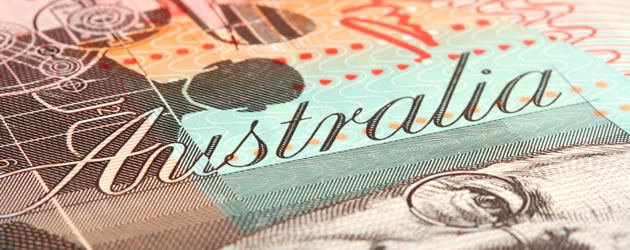- ‘Brexit’ worries dented Euro – EUR/AUD exchange rate weakened despite increased safe-haven demand
- Weaker Business and Consumer Confidence weighed on ‘Aussie’ – Economic outlook muted by softer sentiment
- Less hawkish Fed commentary predicted to boost Australian Dollar – Dialling back of rate hike expectations to increase risk appetite
- Australian unemployment rate held steady in May – EUR/AUD exchange rate strengthened despite signs of robust jobs market
Euro (EUR) Bolstered by Sharp Decline in Risk Appetite
In spite of the Australian employment data continuing to point towards a robust jobs market the Euro to Australian Dollar (EUR/AUD) exchange rate made some strong gains on Thursday morning. The single currency rebounded after the Fed’s latest policy meeting, with safe-haven demand increasing markedly despite policymaker dovishness. As a result the EUR/AUD exchange rate trended higher in the region of 1.5332.
(Previously updated at 17:06 on 15/06/2016)
Euro (EUR) Remained Bearish despite Stronger French Inflation
An unexpected upward revision in the French inflation rate failed to have a particularly positive impact on the Euro (EUR) on Wednesday, as the single currency remained muted. As a result the Euro to Australian Dollar (EUR/AUD) exchange rate continued to trend lower in the region of 1.5180.
(Previously updated at 11:08 on 15/06/2016)
Global fears saw markets gripped by risk aversion, yet the EUR/AUD exchange rate remained weak.
Stronger Eurozone Industrial Production Failed to Rally EUR/AUD Exchange Rate
Following the recent spate of discouraging economic data from China the appeal of the Australian Dollar (AUD) was not particularly enhanced by the May NAB Business Confidence Index. Sentiment weakened from 5 to 3 in the last month, suggesting further downside pressure to economic conditions. With risk appetite on the decline thanks to rising concerns over the possibility of a Chinese hard landing and the threat of ‘Brexit’ the ‘Aussie’ ceded fresh ground to its rivals.
Although Eurozone Industrial Production bettered forecast in April, however, the Euro (EUR) was unable to maintain a bullish trend on Tuesday. While industrial output clocked in at growth of 2.0%, as opposed to the predicted 1.4%, demand for the single currency was muted by the strength of the US Dollar (USD). As the Euro is more exposed to the potential repercussions of a UK vote to leave the EU its appeal was limited in contrast to its safe-haven rivals. Markets also remained sceptical of the beneficial impact of the European Central Bank’s (ECB) new corporate bond buying program, prompting the Euro to Australian Dollar (EUR/AUD) exchange rate to weaken.
Doubts over Fed Action Boosted Australian Dollar (AUD)
A sharp decline shown by the Westpac Consumer Confidence Index suggested further softness in the Australian economy. Confidence in June dipped from 103.2 to 102.2 to reverse some of the recovery in sentiment that had been seen in May. This seemed a rather discouraging indicator for the domestic economy, perhaps raising the odds that the Reserve Bank of Australia (RBA) will need to cut interest rates again in the near future in order to stimulate growth.
Nevertheless, the ‘Aussie’ has benefitted from market speculation ahead of the latest Federal Open Market Committee (FOMC) policy decision. Investors have little doubt that the Fed will opt to leave interest rates unchanged once again, with hopes of a rate hike having been effectively dashed by a poor Non-Farm Payrolls report. As a result demand for the higher-yielding Australian Dollar improved on Wednesday morning, extending the downtrend of the EUR/AUD exchange rate.
EUR/AUD Exchange Rate Forecast: ‘Aussie’ Employment Data Likely to Provoke Volatility
Tomorrow’s Australian employment data could weaken the appeal of the antipodean currency, even if the domestic Unemployment Rate holds steady at 5.7% in May. Any signs of weakness within the local jobs market could encourage bets that the RBA will be prompted to loosen monetary policy in the near future. Confidence in the Australian economy is likely to remain muted, as researchers at NAB noted:
‘The weaker terms of trade and low wages growth will continue to challenge national income and government revenue. Low inflation will remain a feature, but we are not persuaded at this stage that further monetary policy easing will be forthcoming.’
The appeal of the Euro may improve somewhat in response to the finalised Eurozone Consumer Price Index data for May, meanwhile. Although inflation is expected to be confirmed at -0.1% on the year this would nevertheless indicate some improvement in the outlook of the currency union. As this would suggest that the ECB’s easing policy could be having a positive impact on inflationary conditions, which would weaken the case for further loosening, the single currency could rally.
Current EUR, AUD Exchange Rates
At the time of writing, the Euro to Australian Dollar (EUR/AUD) exchange rate was slumped around 1.5179, while the Australian Dollar to Euro (AUD/EUR) pairing was trending higher in the region of 0.6585.



